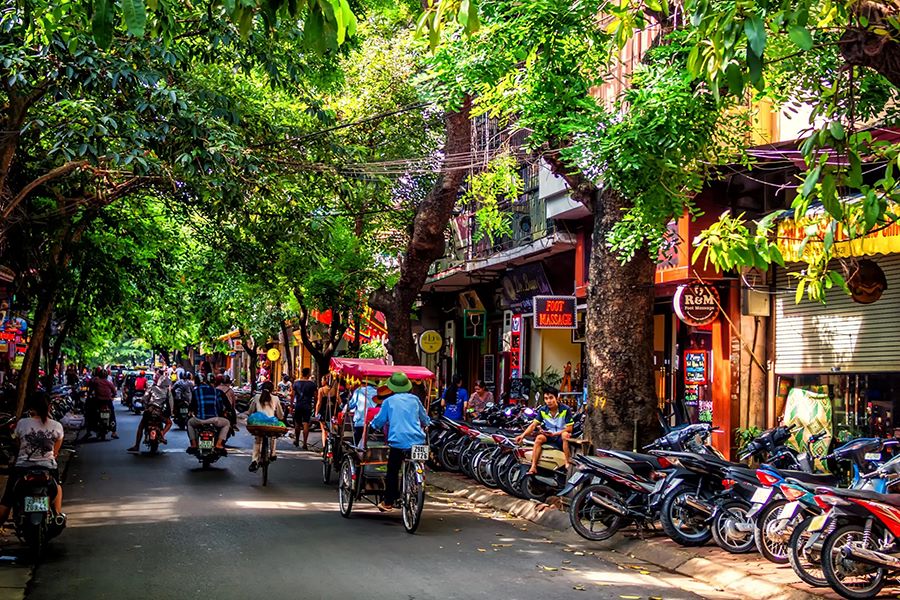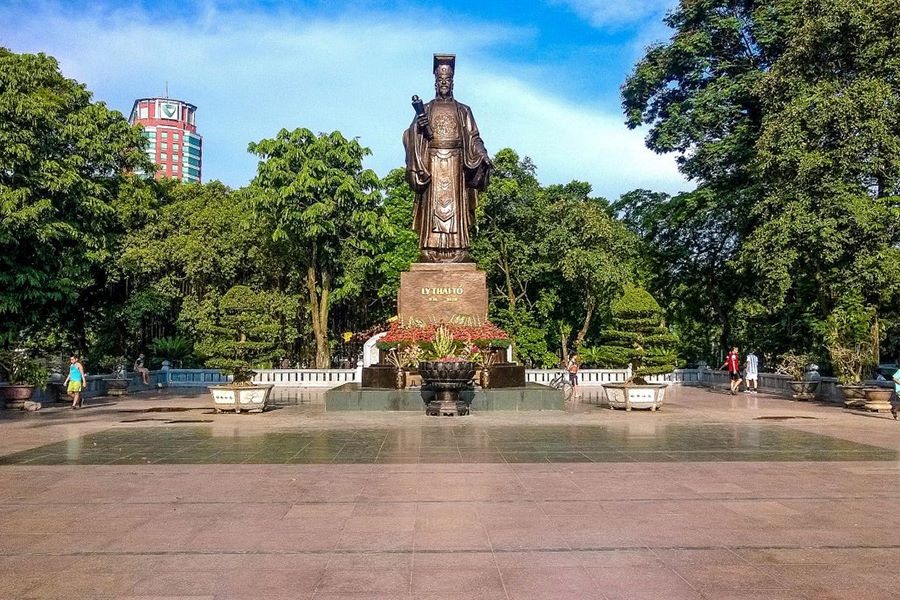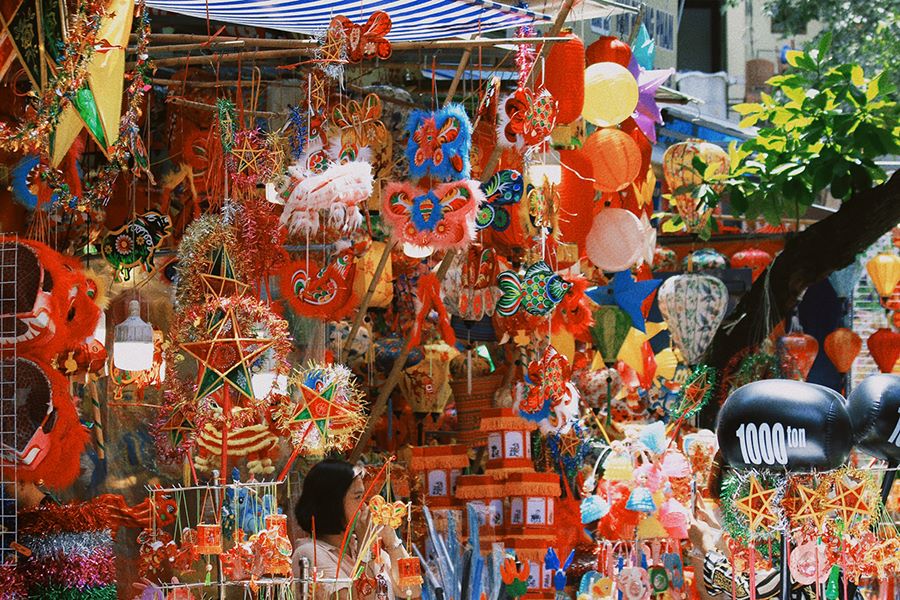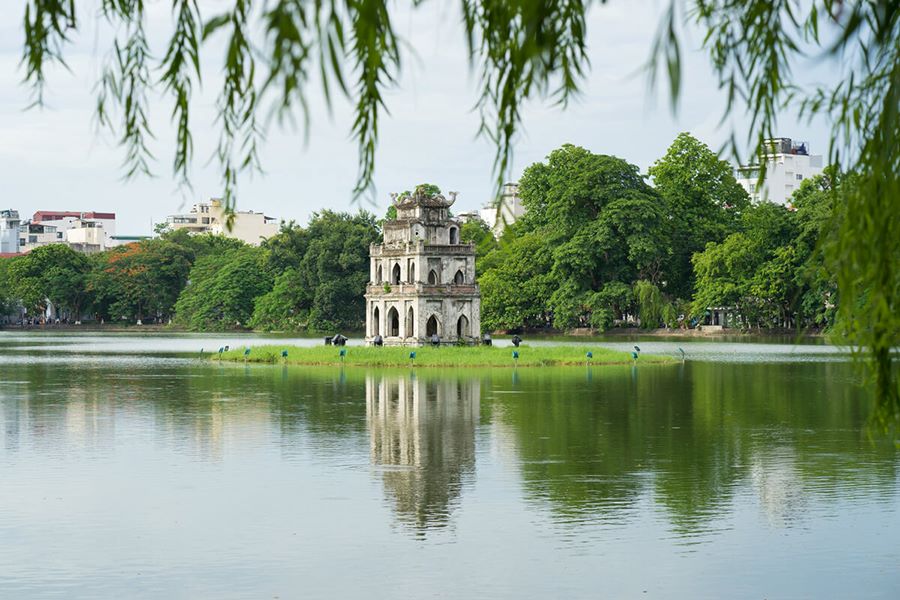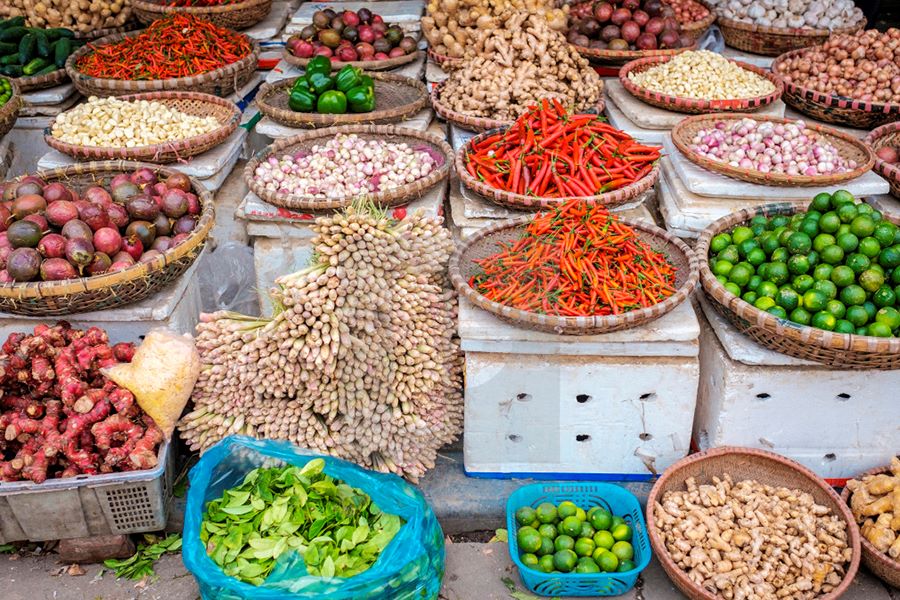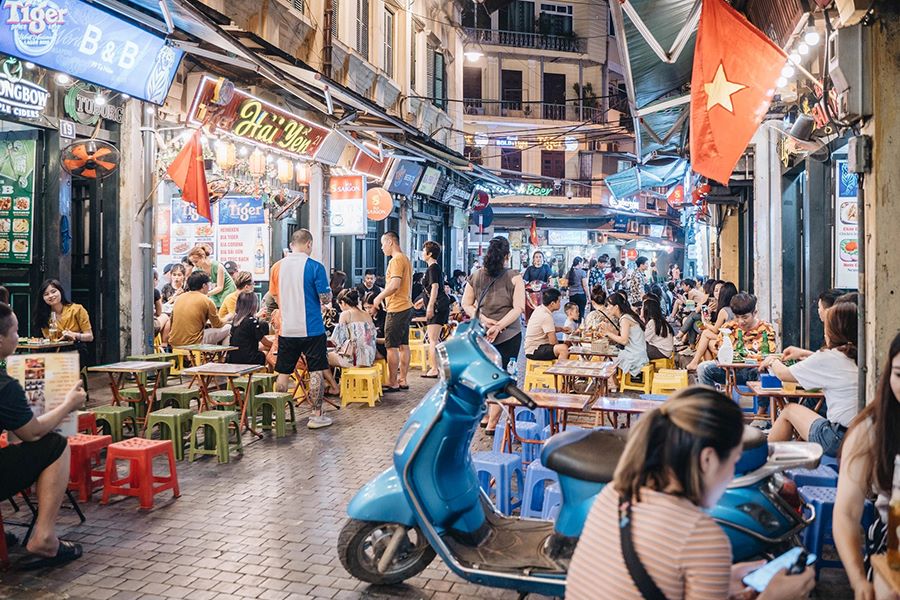Hanoi Old Quarter is always chosen as the first stop of many tourists whenever they travel to this city. Do not worry if you are unsure about where to go and what to do here, as you can find them all in this article. Hanoi Old Quarter has gained its renown thanks to its numerous attractions, rich cuisine, vibrant nightlife, and unique handicrafts. The ups and downs of the city can be clearly seen in this downtown area. This is the reason why it is considered an excellent spot for tourists to explore the culture of Hanoi and sightsee on foot. For more details about Hanoi Old Quarter, read this article from Viet Vision Holidays till the end!
Contents
- 1 About Hanoi Old Quarter Vietnam
- 2 The distinct feature of the Old Quarter Hanoi
- 3 Things to do in Hanoi Old Quarter to be put in your bucket list
- 3.1 Walk around Hoan Kiem Lake
- 3.2 Discover Hanoi’s ancient streets
- 3.3 Immerse yourself in the bustling ambiance of Dong Xuan Market
- 3.4 Wander around Hanoi’s spiritual tourist attractions
- 3.5 Have a drink in the beer street Hanoi Old Quarter – Ta Hien
- 3.6 Explore Bach Ma Temple – An ancient temple of Thang Long Citadel
About Hanoi Old Quarter Vietnam
Talking about Hanoi, the terms “36 Street Hanoi” or “Hanoi Old Quarter” will almost come to everyone’s mind – as these are the streets that have witnessed the history of the capital. The old quarter in Hanoi is now an attractive tourist destination that visitors cannot ignore.
Where is Hanoi Old Quarter?
Hanoi Old Quarter is located to the West and North of Hoan Kiem Lake. This area consists of 36 streets. On the Northernmost side of the Old Quarter is Hang Dau Street, and on the Westernmost side is Phung Hung Street. The Southern section includes Hang Bong Street, Hang Gai Street, Cau Go Street, and Hang Thung Street, while the Eastern section includes Tran Quang Khai Street and Tran Nhat Duat Street.
What are the highlights of the history of the Old Quarter?
The history of the Old Quarter of Hanoi began when King Ly Thai To decided to change the capital from Hoa Lu (Ninh Binh) to Hanoi in the 17th century. Craftsmen from all the surrounding regions started flocking to the area in the 13th century, and over time, they organized themselves into guilds and cooperatives.
At least 36 trade guilds existed in the area in the 15th century. A street that belonged to a guild would be given the name of the commodity the guild was known for. For instance, Hang Tre Street was known as the marketplace for bamboo (tre) products.
In this area, Western architectural style won over traditional Vietnamese and Chinese styles in the 1950s due to the influence of the French. Nowadays, there is no dominant style in the Hanoi Old Quarter, although many of the area’s landmarks feature French architecture.
The distinct feature of the Old Quarter Hanoi
The preserved Old Quarter Hanoi today is the remains of Hanoi’s 36 streets in the past. Visiting this place, you can imagine the culture, socio-economy and people of the old Thang Long Citadel.
The most characteristic feature of Hanoi Old Quarter is the craft streets. From craft villages around the ancient Thang Long citadel, Hanoi’s famous craftsmen gathered here and worked together to form traditional craft quarters.
The most famous craft streets of Hanoi Old Quarter include:
- Hang Bong Street, which specializes in selling quilts, blankets and cushions
- Hang Bac Street, which specializes in selling gold and silver jewelry
- Hang Dao Street, which specializes in selling fabrics of all kinds
- Hang Ma Street, which specializes in selling votive paper, offerings, decorations, toys for the Mid-Autumn Festival and Christmas
- Hang Quat Street, which specializes in selling offerings
- Hang Buom Street, which specializes in selling sweets and jams for Tet
- Hang Thiec Street, which specializes in processing metal, casting tin and iron into household items
- Ma May Street, which specializes in travel and tourism services
Things to do in Hanoi Old Quarter to be put in your bucket list
There are a great number of exciting activities to experience in Hanoi Old Quarter. Here are some of them:
Walk around Hoan Kiem Lake
Located in the city center, Hoan Kiem Lake, also known as Sword Lake, is considered the heart of Hanoi, associated with the legend of the turtle deity claiming the magical sword. Not only attracting visitors with its airy landscape, this is also a Hanoi tourist destination that shows the historical and spiritual tradition of the capital. Therefore, anyone who comes to this city should visit this place once.
In the middle of Hoan Kiem Lake, there is an ancient Turtle Tower. Besides, you can see a small peninsula in which there are other famous relics such as Pen Tower, The Huc Bridge, Tran Ba Communal House, Ngoc Son Temple, etc. Also, visiting Hoan Kiem Lake, you can have a chance to enjoy Trang Tien ice cream – a famous specialty that has been popular for generations in Hanoi.
Discover Hanoi’s ancient streets
Discover Hanoi’s ancient street, where time-honored traditions and bustling commerce blend seamlessly with modern-day charm. The 36 guild streets of the Old Quarter, steeped in history, offer a captivating glimpse into Hanoi’s rich cultural heritage.
While many streets have evolved over time, a few have managed to preserve their old-world allure. Hang Bac, known as Silver Street, still echoes with the clinking of fine jewelry and the bustling activities of money changers. Hang Ma beckons with its vibrant array of religious artifacts and festive decorations, attracting locals in search of spiritual mementos. Silk Street, or Hang Gai captures the essence of its name with a vibrant tapestry of fabric shops and tailors offering custom-made suits and dresses.
Immerse yourself in the bustling ambiance of Dong Xuan Market
Dong Xuan Market, surrounded by the streets of Dong Xuan, Hang Khoai, and Cau Dong, is located at the westernmost side of Hanoi Old Quarter. Like Ben Thanh Market in Ho Chi Minh City or Dam Market in Da Nang, this market has been a symbol and the pride of Hanoi people for many years.
Nestled in downtown Hanoi, this is a large wholesale market with an area of 6,500 square meters with more than 2,100 stalls and 71 kiosks. It sells a multitude of items for the people of Hanoi and is a source of supply for traders. It welcomes thousands of people every day who also come to take pictures, shop around or enjoy food.
Wander around Hanoi’s spiritual tourist attractions
Embark on a spiritual journey through Hanoi’s historic treasures and immerse yourself in the profound heritage that these sacred sites hold. One such treasure is Ma May Ancient House, located at No. 87, Ma May Street in Old Quarter Hanoi. Constructed in the 19th century, this house served as both a residence and a place of business. Despite changing ownership over the years, the house has been diligently preserved, showcasing its original design and architectural beauty.
Another remarkable landmark is the Old City Gate Hanoi, famously known as O Quan Chuong Gate. Built during the reign of King Le Hien Tong in 1749, this gate proudly stands at the intersection of Hang Chieu Street, Dao Duy Tu Street, Thanh Ha Street, and O Quan Chuong Street. Made of stones and bricks hammered with wooden mallets, the two-storey gate features a pavilion with a gracefully curving roof. Once a vantage point for guards, the second storey now proudly displays the national flag on special occasions.
Tourists can experience the charm and heritage of Old Quarter Hanoi firsthand with a captivating and informative Hanoi Old Quarter walking tour. Other noteworthy sites around Hanoi to explore include:
- Hoa Lo Prison: Uncover the haunting history of this infamous prison, known as the “Hanoi Hilton,” where political prisoners were held during the war.
- Ho Chi Minh Mausoleum: Pay your respects to Vietnam’s revered leader, Ho Chi Minh, at his final resting place, a solemn and dignified mausoleum that attracts visitors from around the world.
- Hanoi Flag Tower: The tower stands at a height of 33 meters and offers panoramic views of Hanoi’s skyline. The tower has witnessed significant historical events and proudly displays the national flag on special occasions, representing the resilience and pride of the Vietnamese people.
- Thang Long Imperial Citadel: Delve into the ancient history of Vietnam as you explore the grandeur of this UNESCO World Heritage Site, which served as the political and cultural heart of Hanoi for centuries.
- Thang Long Water Puppet Theater: Be enthralled by the enchanting artistry of water puppetry, a traditional Vietnamese performance that combines storytelling, music, and vibrant puppetry.
Have a drink in the beer street Hanoi Old Quarter – Ta Hien
Ta Hien Street is likened to a paradise for night owls and beer lovers. The beer of Ta Hien Street is incredibly well-known so it is not an exaggeration to say that this is the best place to take in Hanoi’s vibrant nightlife and sip a cool beer. If you come to Hanoi on sweltering days, grab some beer and cheer with your friends at this place!
Here, instead of sitting in pubs, you will sit on an outdoor stool to enjoy bottles of beer that are also put on a stool. This is a great way for visitors to experience the traditional and simple lifestyle in Hanoi. Additionally, the beer is frequently served with mouth-watering food like roasted squid, fried fermented pork rolls, roasted bird, or sunflower seeds.
Explore Bach Ma Temple – An ancient temple of Thang Long Citadel
Bach Ma Temple was constructed in the 9th century and used to worship Long Do, a legendary deity of Hanoi. Many past dynasties acknowledged this place as an exceptional building and had continued to restore it. The temple resembles an eight-roof communal house decorated with patterns that are very similar to Hoi An fine arts.
People often visit Bach Ma Temple to take in the peaceful atmosphere and admire the engraving artifacts in ancient times. If you come here on the 12th and 13th days of the second lunar month, you will likely experience the melancholy atmosphere of an annual traditional festival at Bach Ma Temple.

